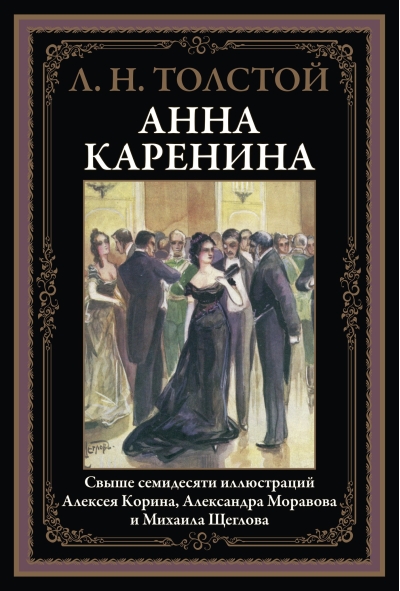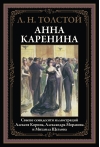Anna Karenina
29.99 €
Out of stock
In one of the greatest works of world literature, Leo Tolstoy (1828-1910) not only tells the story of the tragic love of a married woman who left her husband for a handsome officer, but also comprehensively illuminates the most important aspects of the life of the author's contemporary society at a critical period in its development. The book is decorated with drawings by Russian artists Alexei Mikhailovich Korin (1865-1923), Alexander Viktorovich Moravov (1878-1951) and Mikhail Mikhail Mikhailovich Scheglov (1885-1955). Leo Tolstoy worked on "Anna Karenina" for five years, from 1873 to 1878; it was a period of the writer's realization of the negative aspects of the life of the upper classes of society, rethinking the author's contemporary world order and the surrounding reality, an active search for answers to the key questions of existence. The conclusions, sometimes paradoxical, predetermined the reaction to the novel of the reading public. The book was met ambiguously: it was both praised and scolded, not only by ordinary readers, but also by professional writers. Philosopher, publicist and literary critic, a close friend of Tolstoy NN Strakhov noted that "Anna Karenina" excites such admiration and such a fierce, which I do not remember in literature. Tolkami no end ... Your novel takes everyone and reads unimaginable. The success is really incredible, crazy. So read only Pushkin and Gogol, pouncing on their every page and neglecting everything that is written by others. Strakhov echoed and great-aunt and close friend of the writer Countess AA Tolstaya: "Every chapter of "Anna Karenina" raised the whole society on the fringes, and there was no end of crowds, enthusiasm, and gossip, and quarrels, as if it was about the issue, each personally close to each". But Turgenev, Saltykov-Shchedrin, Dostoevsky, F. M. Tolstoy's new novel first disappointed. Noting Leo Tolstoy's skill in portraying different segments of the population, deep insight into the psychology of the characters, life-like situations and characters, they nevertheless considered the novel a step backward compared to the progressive a decade ago "War and Peace". Particularly harsh in their assessments was folk critic A. M. Skabichevsky, who called the first parts of "Anna Karenina" "idyll of children's diapers," "melodramatic junk in the spirit of the old French novels". And the first publisher of "Anna Karenina" MN Katkov even refused to publish in his magazine "Russian Messenger" last, the eighth part, being fundamentally disagree with Tolstoy's assessment of the volunteer movement in Russia in favor of the Serbs. However, time has put everything in its place, and a little later, after familiarizing himself with the full text of the novel, the same Dostoevsky in "Diary of a Writer" stated that "Anna Karenina" is perfection as an artistic work, turned up just in time, and such, with which nothing similar from European literature in the present era can not be compared", and art historian V. V. Stasov argued that "Anna Karenina" is a perfection as an artistic work, which turned up just in time, and such a thing, with which nothing similar from European literature in the present era can not be compared", and the art historian V. V. Stasov argued that the novel is a work of art. V. Stasov argued that "Count Leo Tolstoy rose to such a high note, which has never before taken Russian literature".
See also:
- All books by the publisher
- All books by the author
- All books in the series Library of World Literature














